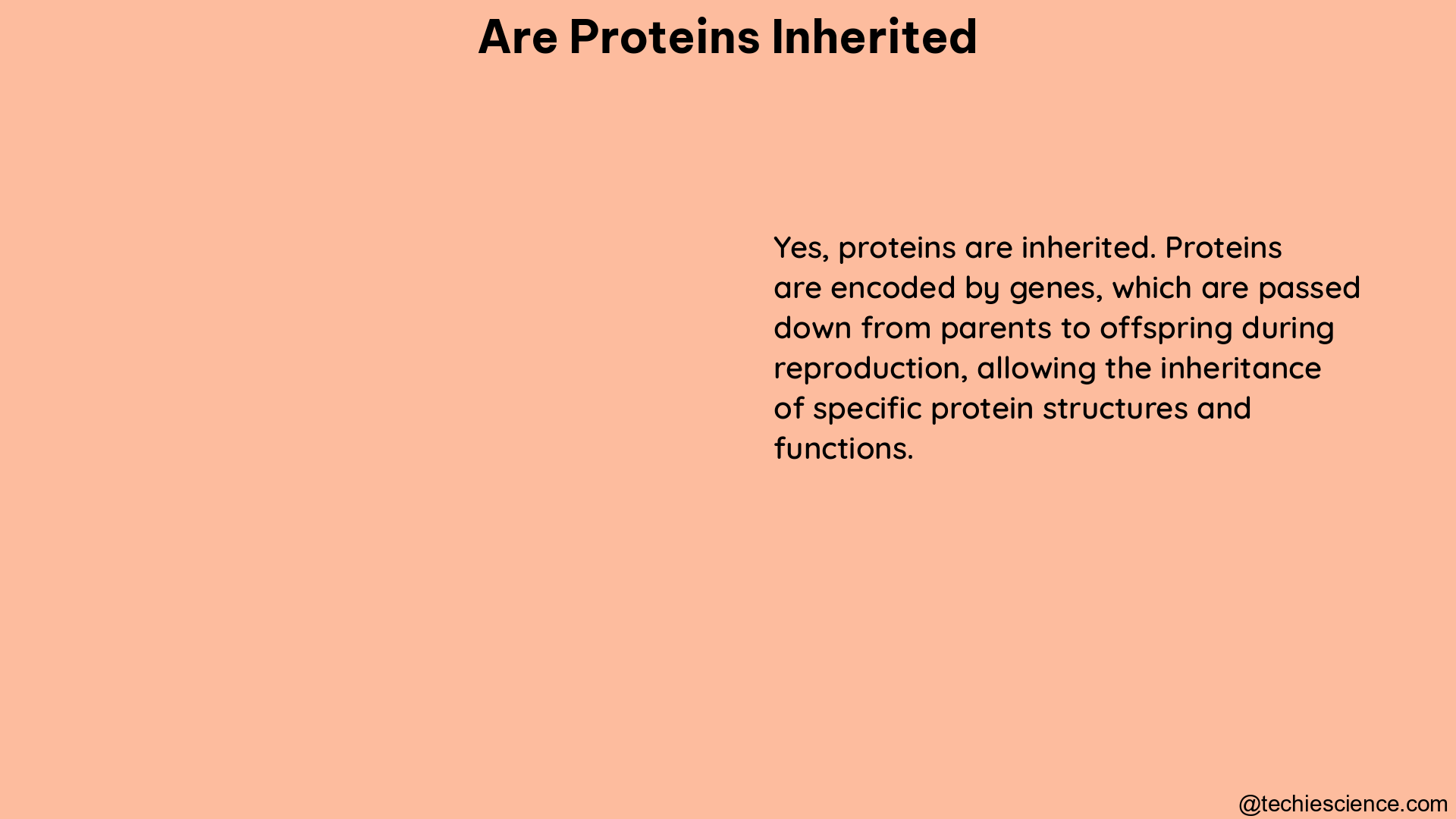Summary
Proteins are the fundamental building blocks of life, and their inheritance is a complex and fascinating topic in the field of genetics. While proteins are directly produced from the genetic information encoded in DNA, the relationship between genotype (genetic makeup) and phenotype (observable traits) is not always straightforward. This article delves into the intricacies of protein inheritance, exploring the role of cis-acting and trans-acting genetic variants, the impact of transcriptional and translational regulation, and the insights gained from recent studies on the genetic basis of protein level variation.
Understanding Protein Inheritance

The Genetic Basis of Protein Production
Proteins are the products of genes, which are themselves inherited. The genetic information encoded in DNA is first transcribed into messenger RNA (mRNA), and then translated into the corresponding protein molecules. This process of gene expression is the foundation of protein inheritance, as the genetic information passed down from parents to offspring ultimately determines the proteins that will be produced in the cells of the offspring.
The Complexity of Genotype-Phenotype Relationships
While the inheritance of proteins is directly linked to the inheritance of genes, the relationship between genotype and phenotype is not always straightforward. The expression of genes is influenced by a variety of factors, including:
- Transcriptional Regulation: The rate and timing of gene transcription can be regulated by transcription factors, epigenetic modifications, and other regulatory elements.
- Translational Regulation: The efficiency of protein synthesis can be influenced by factors such as mRNA stability, codon usage, and the availability of translation machinery.
- Post-Translational Modifications: Proteins can undergo various chemical modifications after translation, which can alter their structure, function, and stability.
- Protein-Protein Interactions: Proteins often interact with other proteins, forming complex networks that can influence their activity and localization within the cell.
These factors can lead to differences in protein expression and function, even in individuals with the same genotype. As a result, the same genotype can give rise to different phenotypes under different environmental or developmental conditions.
Cis-acting and Trans-acting Genetic Variants
In the context of protein inheritance, it is important to consider both cis-acting and trans-acting genetic variants. Cis-acting variants are located near the gene they affect and can influence the expression of that gene by affecting its transcription or translation. Trans-acting variants, on the other hand, are located elsewhere in the genome and can influence the expression of genes at distant loci.
A study published in the journal Science in 2014 analyzed the levels of 4,084 GFP-tagged yeast proteins in the progeny of a cross between a laboratory and a wild strain. The study found that:
- Cis-acting variants had a large effect on protein level, six times more frequently than the rest of the genome combined.
- Trans-acting variants contributed little to protein level variation between individual cells but explained more than 50% of the variance in the population’s average protein abundance for half of the GFP fusions tested.
This suggests that both cis-acting and trans-acting genetic variants play important roles in determining protein levels, with cis-acting variants having a more pronounced effect on individual protein expression and trans-acting variants contributing more to population-level variation.
Shared and Independent Genetic Control of Transcript and Protein Abundance
The study also found that more than half of the expression quantitative trait loci (eQTLs) contribute to changes in protein levels of regulated genes, but several protein quantitative trait loci (pQTLs) do not affect their cognate transcript levels. This indicates that there is both shared and independent genetic control of transcript and protein abundance.
Factors that can contribute to this independent genetic control include:
- Post-Transcriptional Regulation: Processes such as mRNA stability, translation efficiency, and protein degradation can be influenced by genetic variants that do not affect transcript levels.
- Post-Translational Modifications: Genetic variants can influence the enzymes and pathways responsible for post-translational modifications, leading to changes in protein function and abundance without affecting transcript levels.
- Protein Localization and Trafficking: Genetic variants can impact the cellular localization and trafficking of proteins, which can affect their availability and function without altering transcript levels.
Understanding the complex interplay between genetic variants, transcript abundance, and protein expression is crucial for unraveling the genetic basis of heritable traits and phenotypes.
Implications and Applications
The study of protein inheritance has important implications for various fields, including:
- Evolutionary Biology: Analyzing the genetic basis of protein level variation can provide insights into the evolutionary forces that shape the genotype-phenotype relationship and the emergence of new traits.
- Personalized Medicine: Identifying the genetic determinants of protein expression and function can help develop targeted therapies and personalized treatment approaches for genetic disorders and complex diseases.
- Biotechnology and Synthetic Biology: Understanding the principles of protein inheritance can inform the design and engineering of novel proteins and biological systems with desired properties.
By delving deeper into the intricacies of protein inheritance, researchers can uncover the complex mechanisms that govern the expression and function of these essential biomolecules, ultimately advancing our understanding of life and its remarkable diversity.
Conclusion
Proteins are the fundamental building blocks of life, and their inheritance is a complex and fascinating topic in the field of genetics. While proteins are directly produced from the genetic information encoded in DNA, the relationship between genotype and phenotype is not always straightforward. Factors such as transcriptional and translational regulation, post-translational modifications, and protein-protein interactions can all influence the expression and function of proteins.
In the context of protein inheritance, it is important to consider both cis-acting and trans-acting genetic variants, as well as the shared and independent genetic control of transcript and protein abundance. By studying the genetic basis of protein level variation, researchers can gain insights into the evolutionary forces that shape the genotype-phenotype relationship and develop new approaches for personalized medicine and biotechnology applications.
As our understanding of protein inheritance continues to evolve, we can expect to see exciting advancements in our ability to harness the power of these essential biomolecules and unlock the secrets of life itself.
References
- Estimating the information content of genetic sequence data: https://academic.oup.com/jrsssc/article/72/5/1310/7230752
- Quantification of Protein Levels in Single Living Cells: https://www.sciencedirect.com/science/article/pii/S2211124715013637
- Heritability and genetic basis of protein level variation in an outbred population: https://www.ncbi.nlm.nih.gov/pmc/articles/PMC4120089/

I am Trisha Dey, a postgraduate in Bioinformatics. I pursued my graduate degree in Biochemistry. I love reading .I also have a passion for learning new languages.
Let’s connect through linked in: